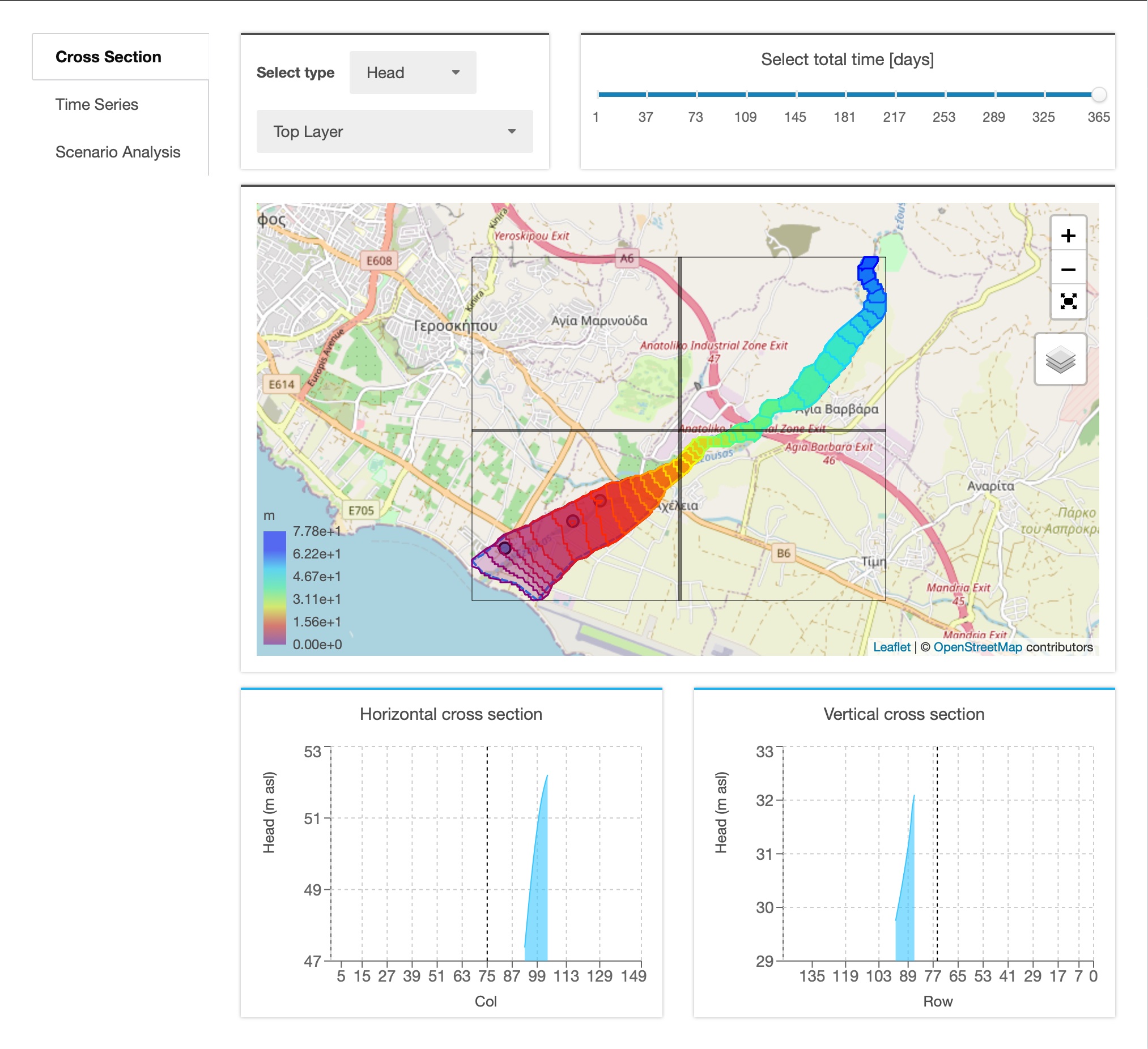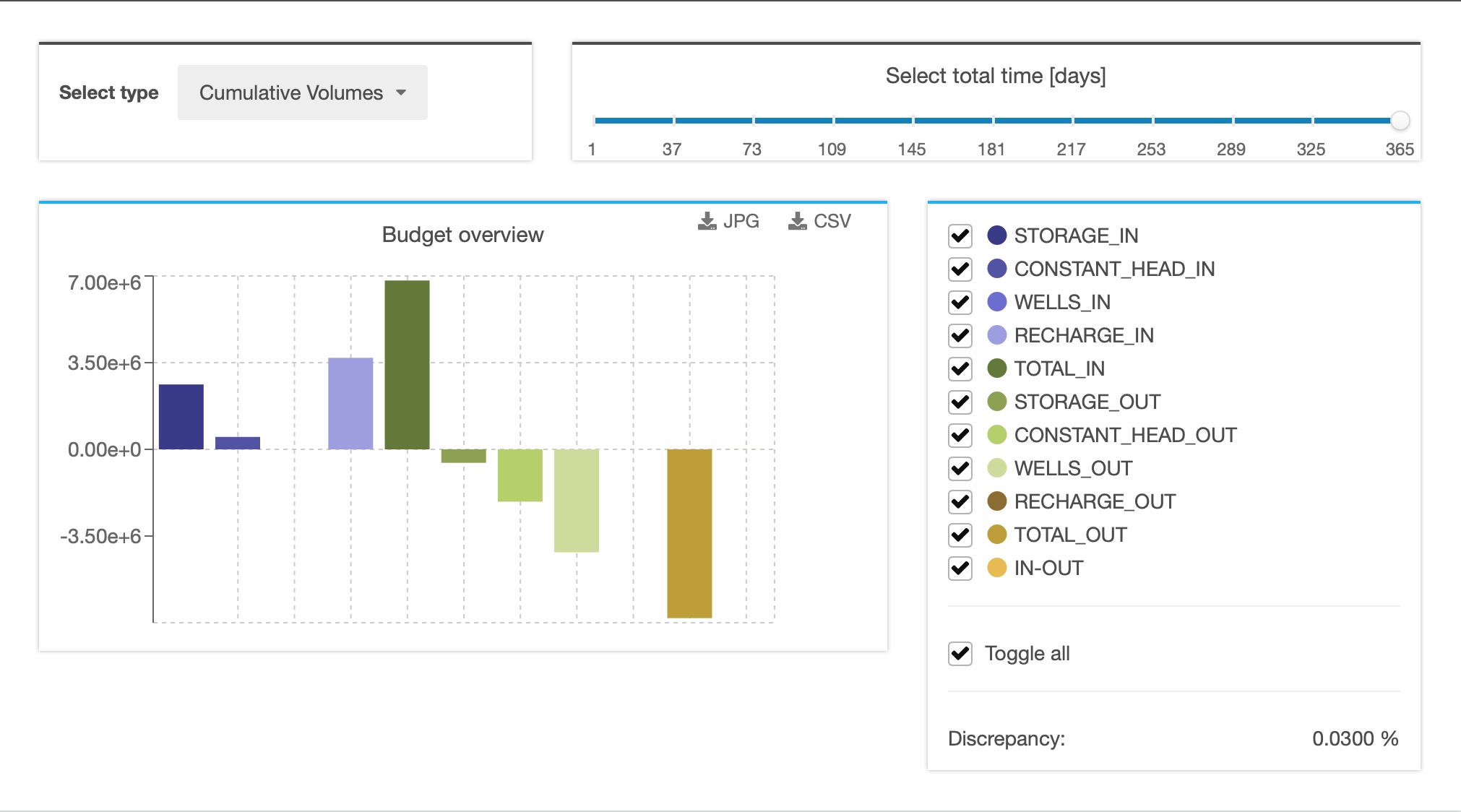Development of a numerical flow model for Ezousa alluvial aquifer to investigate the impact of natural and anthropogenic activities such as rainfall, riverbed infiltration, abstraction from pumping wells and recharge through ponds.
Scope
Assess the sustainability of the existing managed aquifer recharge (MAR) scheme at the Ezousa watershed, Cyprus.
Location
Ezousa alluvial aquifer including the existing MAR scheme of the Limassol district of Cyprus. See on map.
Conceptual model
- Model area: 3.2 km2 with 6600 grid elements, cell size of 22 x 22 m
- Stratigraphy of model layers determined from 29 bore-logs
- Model calibration using data from 21 observation wells (2002-2003 and 2014-2018)
- Water extraction rates from nine pumping wells (same time period as above)
- Monthly rainfall data available from paphos airport area (southern part of the model)
- 5 recharge ponds distributed along the Ezousa river in four zones with different hydraulic conductivity values (which was interpreted from the results of pumping tests)
Simulation scenarios
Base-model representing the groundwater heads in the catchment, variations of recharge and pumping rates to reflect potential changes in the operation of the system.
Model results
A transient simulation was run for a period of four years (2014 – 2018) for which the most recent data was available. The results of this base model were used as a guide to construct predictive scenarios for the analysis of aquifer’s sensitivity to changes in infiltration and pumping rates. The simulations suggested which infiltration ponds exhibit the highest recharge rate. Plotting the cumulative pumping rates from existing wells versus recharge rates in the ponds it help to assess the overall water balance of the MAR system. For all three observation locations, a non-decreasing trend of the head values for the simulation period was observed, suggesting that the groundwater losses due to natural and anthropogenic activities are sufficiently recovered. Read more.


Authors
Konstantinos Panagiotou
University of Cyprus
Acknowledgement
The model was developed within the framework of the WaterJPI project “Smart framework for real-time monitoring and control of subsurface processes in managed aquifer recharge (MAR) applications (SMART-Control)” with funding provided by the Research Promotion Foundation of Cyprus.
